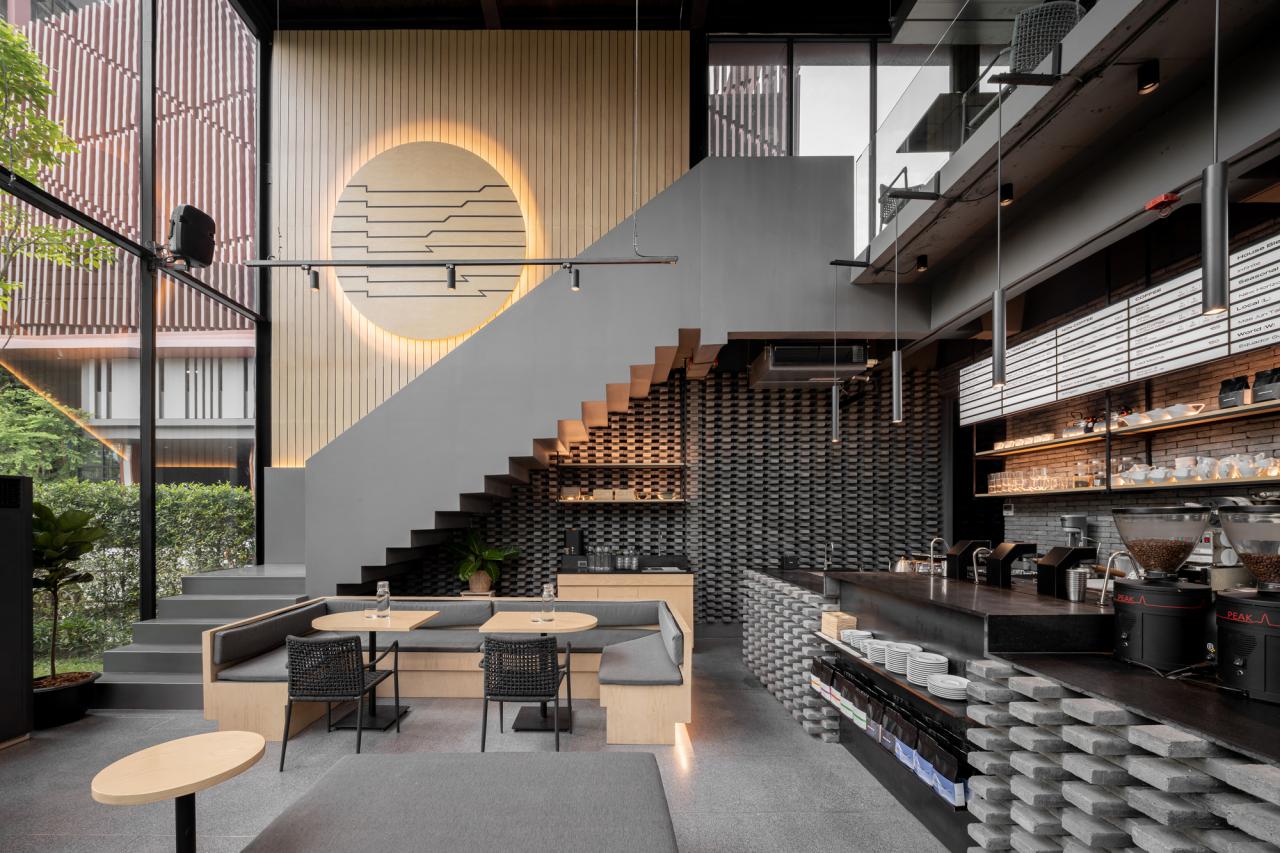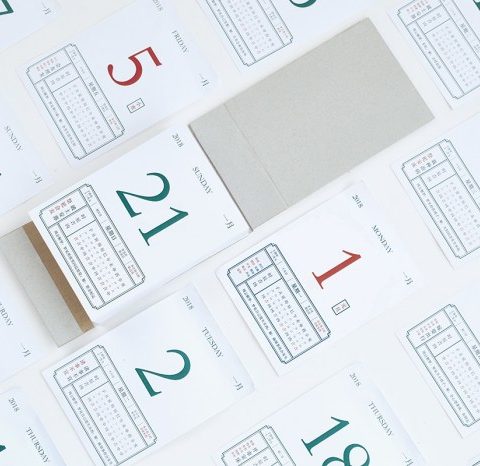Practical Considerations in Cafe Design

Contoh desain cafe dengan aplikasi – Designing a successful cafe requires careful consideration beyond aesthetics. Functionality, efficiency, and accessibility are paramount to creating a positive customer experience and a profitable business. This section delves into the practical aspects crucial for a well-designed cafe space.
Seating Arrangements and Traffic Flow
Optimal seating arrangements directly impact customer comfort and staff efficiency. A well-planned layout minimizes congestion and maximizes space utilization. Consider a variety of seating options to cater to different customer preferences – comfortable armchairs for lingering patrons, smaller tables for solo diners, and larger communal tables for groups. Strategic placement of these seating areas should facilitate a smooth flow of traffic, preventing bottlenecks near the ordering counter or restrooms.
Aisles should be wide enough to accommodate wheelchairs and allow for easy movement of staff carrying trays. For example, a cafe with a high volume of takeaway orders might benefit from a separate pickup area to prevent congestion near the seating area.
Accessibility Considerations, Contoh desain cafe dengan aplikasi
Designing an accessible cafe is not only ethically responsible but also legally mandated in many jurisdictions. This involves ensuring ease of access for people with disabilities. Ramps or lifts should be provided for wheelchair users, and restrooms should be compliant with accessibility standards. Signage should be clear and easy to read, including braille and large print options.
Adequate space should be provided for wheelchair maneuvering, particularly near tables and counters. Consider the placement of power outlets for those using mobility aids. Furthermore, ensuring clear sightlines and well-lit pathways can greatly improve navigation for visually impaired customers.
Imagine crafting the perfect cafe ambiance using design apps, a digital canvas where your vision takes flight. The success of your cafe, however, extends beyond the walls; consider the crucial first impression – the packaging! Find inspiration for that perfect touch with stunning examples of contoh desain bungkus kopi kertas bibon , elevating your brand identity from the very first sip.
Ultimately, consistent design, from cafe interior to coffee packaging, creates an unforgettable experience.
Floor Plan Illustration: An Efficient Layout
Imagine a rectangular cafe space. The entrance is positioned centrally on one of the shorter sides. Immediately to the right of the entrance is the ordering counter, followed by a dedicated pick-up area for takeaway orders. This prevents congestion near the main seating area. To the left of the entrance, a pathway leads to the restrooms and a small storage area.
The main seating area occupies the bulk of the space, arranged in zones: a quiet zone with armchairs near the windows, a central area with tables of varying sizes, and a bar-style seating area along one wall. Aisles between seating zones are sufficiently wide, ensuring smooth traffic flow. The kitchen is located at the back, easily accessible from the pick-up area for efficient service.
This layout prioritizes clear pathways, efficient service, and customer comfort.
Potential Challenges and Solutions
One common challenge is managing noise levels. High ceilings, sound-absorbing materials (such as carpets and acoustic panels), and strategic placement of seating can help mitigate this. Another challenge is optimizing kitchen space. Careful planning, efficient equipment layout, and a streamlined workflow are crucial for efficient food preparation and service. Insufficient storage space can be addressed through custom-built shelving and clever organization strategies.
Finally, managing peak-hour crowds can be addressed by implementing a queuing system, providing sufficient staff, and offering pre-ordering options. For instance, a popular cafe in a busy city center might employ a digital queuing system to manage wait times effectively.
Best Practices for Aesthetic and Functional Design
Integrating aesthetics and functionality requires a holistic approach. The cafe’s design should reflect its brand identity and target audience while maintaining practicality. High-quality materials that are easy to clean and maintain are essential. Good lighting enhances the ambiance and visibility. A well-designed ventilation system is crucial for managing odors and maintaining air quality.
The use of natural light and plants can create a welcoming atmosphere. Regular maintenance and upkeep are essential to maintain the cafe’s aesthetic appeal and functionality. A visually appealing menu board and clear signage further enhance the customer experience. For example, a rustic-themed cafe might use exposed brick walls and wooden furniture, while a modern cafe might opt for sleek, minimalist designs.
Illustrative Examples of Cafe Designs

Designing a successful cafe requires a deep understanding of target demographics and a cohesive vision that translates into every design element. From the furniture and color palette to the lighting and overall ambiance, each choice contributes to the unique experience offered to patrons. This section explores three distinct cafe concepts, highlighting the design choices and their impact on the customer experience and brand identity.
The Cozy Bookstore Cafe
This cafe seamlessly blends the comforting atmosphere of a bookstore with the welcoming environment of a coffee shop, targeting a sophisticated, book-loving clientele who appreciate quiet contemplation and intellectual stimulation.
The design prioritizes comfort and intimacy. Warm, earthy tones dominate the color palette, with rich browns, deep reds, and creamy off-whites creating a sense of warmth and coziness. Comfortable armchairs and plush sofas are strategically placed throughout the space, encouraging customers to linger and relax. Bookshelves filled with a curated selection of books line the walls, acting as both décor and a source of browsing pleasure.
Soft, ambient lighting adds to the relaxed atmosphere, while strategically placed reading lamps provide focused illumination for those engrossed in their books. The overall effect is one of quiet sophistication and intellectual refuge.
The Vibrant Urban Coffee Bar
This cafe caters to a younger, trendier crowd, emphasizing a fast-paced, energetic environment with a focus on high-quality coffee and a visually stimulating design.
In contrast to the bookstore cafe, this space bursts with energy and visual interest. Bright, bold colors—such as vibrant yellows, electric blues, and pops of neon pink—are used sparingly but effectively to create visual excitement. The furniture is modern and minimalist, featuring sleek metal chairs and high-top tables that encourage a quick turnover. The walls might showcase street art or bold geometric patterns, reflecting the urban setting and attracting a younger demographic.
Bright, overhead lighting ensures a well-lit and energetic space, further enhancing the fast-paced atmosphere. The overall experience is designed to be quick, efficient, and visually stimulating.
The Rustic Farmhouse Cafe
This cafe aims for a relaxed, homey feel, appealing to a family-oriented clientele seeking a casual and comfortable dining experience.
This design emphasizes natural materials and a rustic aesthetic. The color palette is muted and natural, with shades of beige, cream, and pale greens dominating the space. The furniture is comfortable and inviting, featuring rustic wooden tables and chairs, perhaps with mismatched pieces to add character. The décor includes elements like exposed brick, reclaimed wood, and vintage-inspired accents, creating a sense of warmth and nostalgia.
Natural light is maximized through large windows, and soft, warm lighting creates a welcoming atmosphere. The overall effect is one of relaxed comfort and rustic charm.
Branding for the Rustic Farmhouse Cafe
The Rustic Farmhouse Cafe’s branding will reflect its design style. The logo will feature a stylized illustration of a farmhouse, possibly with a coffee bean subtly incorporated into the design. The color palette will be a muted, earthy palette consisting primarily of creams, browns, and muted greens, mirroring the cafe’s interior. The font will be a serif typeface, such as Garamond or Playfair Display, to evoke a sense of tradition and timelessness.
The overall brand identity will convey a sense of warmth, comfort, and wholesome goodness, aligning perfectly with the cafe’s rustic and family-friendly atmosphere. The rationale behind these choices is to create a visual representation that accurately reflects the cafe’s atmosphere and target audience, building a strong and recognizable brand identity.
Q&A: Contoh Desain Cafe Dengan Aplikasi
What are the typical costs associated with cafe design software?
Costs vary greatly depending on the application and features offered. Some offer free versions with limited capabilities, while others require subscription fees or one-time purchases, ranging from a few dollars to hundreds annually.
How important is 3D modeling in cafe design?
3D modeling is crucial for visualizing the space, experimenting with different layouts, and identifying potential issues before construction begins. It allows for better client communication and a more refined final product.
What are some common mistakes to avoid in cafe design?
Common mistakes include neglecting accessibility, poor traffic flow, insufficient lighting, inadequate seating, and ignoring the overall ambiance and brand identity.
How can I ensure my cafe design is sustainable?
Sustainable design involves using eco-friendly materials, optimizing energy efficiency through lighting and HVAC systems, and reducing waste through thoughtful planning and material selection.






